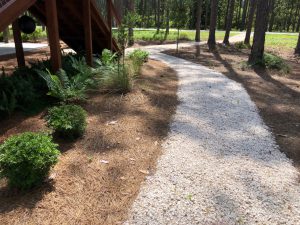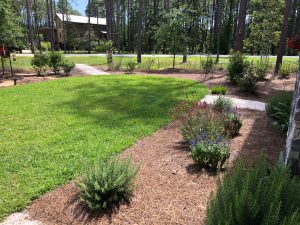As we have all observed communities are growing in the Panhandle through new home construction or through renovation of existing properties. This article will address new home construction. Many questions come to mind as construction begins with some of these questions needing to be addressed prior to start of construction. Determining impacts on the plant resources that already exist on the site should be included in the planning, design, construction and post-construction phases to be successful in achieving a healthy vibrant landscape for all to enjoy.
Homes in community developments are being located on smaller lots in groups with conservation areas saved for the open spaces for all to enjoy. An older term for this was new urbanism and now is often referred to as conservation or clustered development. This type of development identifies and encourages environmentally friendly habitats for plants and animals creating a biodiversity within a walkable neighborhood designed to protect yet allow residence to enjoy some of the Northwest Florida beauty.
How can the objectives of building the new home desired, manage to protect the healthy plants already existing on the site? These challenges are difficult to answer but there are steps to accomplish both. For this article I will address construction and tree protection.
Protecting existing trees during the construction and post-construction phases takes expertise and a plan. First, consider hiring a professional arborist or urban forester to assist in this plan development. Understanding the existing trees on site prior to construction from the variety, location, visual impacts, size, overall health and location on the property are a good start. How do you protect the selected trees? First identify the trees that will need to be removed. Look for unhealthy stressed trees, significant limb death already occurring, poor crown growth (thinning) and other observations.
The next step is to make a sight plan that needs to include grading needs for the home, drainage on the property, existing trees and surrounding vegetation, property lines, set back requirements, driveway location, utility placements and site of home. Flag trees that will be impacted and will need to be removed during the construction.
Following the sight plan, a tree protection plan needs to occur. This must happen before construction begins and include all parties involved to make sure all are in agreement. This is the stage where the group can identify conflicts involving tree protection and construction. Oversight by the owner, contractor and equipment operators is critical. A tree protection zone must be identified and implemented before construction. This typically involves setting up a fence around the protected trees and vegetation to restrict access of equipment and potential damage to the root system. A rule of thumb is to maintain a radius of at least 1.25 feet of protected area for each 1 inch of tree trunk diameter. An example would be a 12-inch diameter tree trunk with good protection at 15 feet to best protection at 30 feet of radius.
The point is to give the best chance of a health survival of the tree during this soil and site disturbance as the construction process progress all the way to post construction with the removal of the protective fencing. Difficult decisions may need to be made of selecting trees to protect but will be needed. Enjoy the successes and plan for creating a new landscape that includes part of conserving plants that were there before and going forward.
- Deer Damage in the Landscape - February 22, 2024
- Gardeners: A Critical Link to Protecting Our Water - January 18, 2024
- Propagating Plants by Leaf and Cane - December 14, 2023



